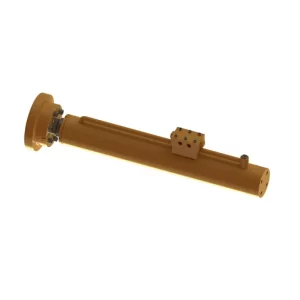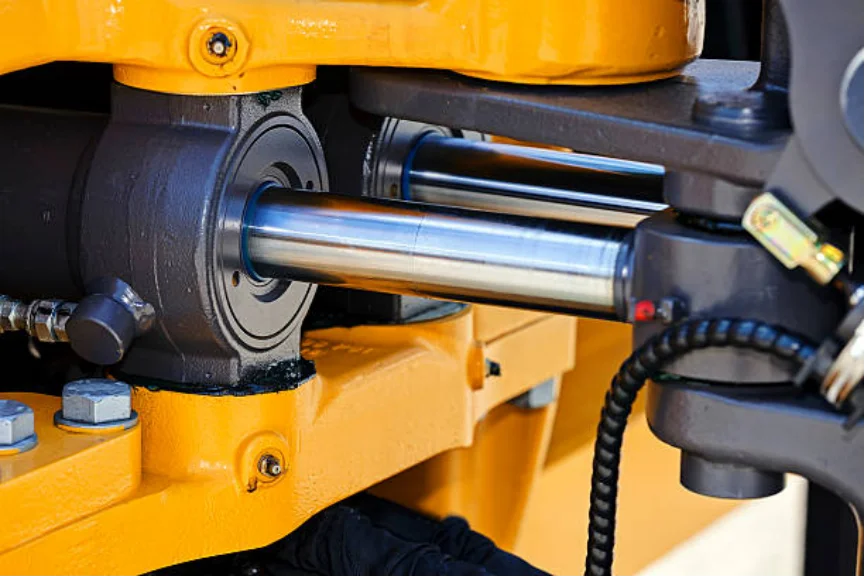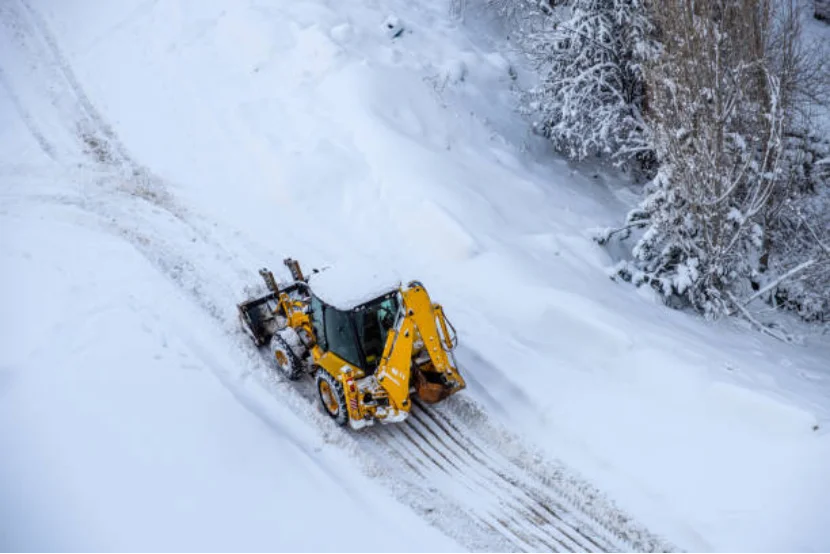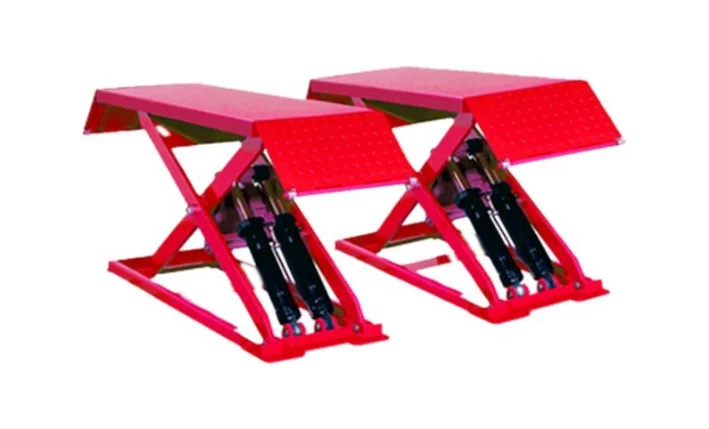Understanding the Components of a Hydraulic Cylinder
Key Parts of a Hydraulic Cylinder and Their Functions
A hydraulic cylinder is a vital piece in many machines used for industry and building. It turns liquid energy into pushing or pulling power. The main parts of a hydraulic cylinder include:
Cylinder Barrel: This is the main body. It holds the liquid. It also keeps the piston inside. The barrel stays strong and acts as a space where liquid pushes the piston.
Piston: The piston is a key moving part. It sits inside the barrel. It splits the liquid spaces. The piston turns liquid energy into straight-line movement.
Piston Rod: This rod is fixed to the piston. It sticks out of the cylinder. It carries force to outside parts like machine arms or tools.
Seals: Seals are important for keeping pressure. They stop liquid from leaking. They also make moving parts slide smoothly by cutting down friction.
End Caps: These caps sit at both ends of the barrel. They hold parts inside. They also give spots to attach the cylinder to other things.
Hydraulic Fluid: This isn’t a solid part. It’s the liquid that carries energy inside the system.
Common Issues Affecting Hydraulic Cylinder Performance
Wear and Tear on Hydraulic Cylinder Parts
Over time, parts of a hydraulic cylinder can wear out. This hurts how well it works. For example:
Piston rods can get scratches or rust. This makes them less effective.
Seals can get hard or crack after lots of use. This lets pressure slip away.
Checking and fixing parts often can catch problems early. This keeps the cylinder running smoothly.
Contamination and Its Impact on Efficiency
Dirt, water, or tiny metal bits can get into the system. These hurt the cylinder:
Dirt can scratch parts like pistons or barrels.
It can block filters or mess up liquid flow. This slows the system down.
Using clean liquid and good filters helps stop these problems. It keeps the cylinder working well.
Seal Failures and Leakage Problems
Seals often cause trouble when they fail. This can happen because:
Seals are put in wrong. This makes them sit unevenly.
Hot or cold weather can ruin seal materials.
Leaks make the cylinder weaker. They also waste liquid, which costs money. Changing old seals regularly stops these issues.
Shining Hydraulic has professional technology and equipment. They produce various types of professional hydraulic cylinders, which will surely make you feel that you get more than you pay for.
Tools and Techniques for Hydraulic Cylinder Repair
Essential Hydraulic Cylinder Repair Tools
Fixing a hydraulic cylinder needs special tools. These help take it apart, check it, and put it back together. Key hydraulic cylinder repair tools include:
Seal Kits: These have new seals made for specific cylinders.
Wrenches and Spanners: These loosen or tighten bolts when taking parts apart or putting them back.
Hydraulic Presses: These push out stuck parts like pistons from rods.
Measuring Tools: Tools like micrometers or calipers check sizes during fixes.
Proper Use of Tools to Maintain Cylinder Longevity
Using hydraulic cylinder repair tools the right way helps fixes last longer:
Always follow the maker’s instructions for changing seals or parts.
Don’t tighten bolts too much. This can harm threads or stress parts.
Clean tools before using them. This stops dirt from getting into the cylinder.
Shining Hydraulic offers custom services for special needs. Using the right tools keeps your cylinder lasting longer. It also cuts down on repair time.
Best Practices for Maintaining Hydraulic Cylinders
Regular Inspection and Maintenance Routines
Keeping hydraulic cylinders in good shape is a must. Regular checks find problems before they get big. Here are key steps:
Look Closely: Check the barrel, piston rod, and seals. Look for wear, rust, or damage. Scratches on the rod can hurt seals.
Test While Running: Watch how the cylinder works. Strange noises or slow moves might mean trouble inside.
Check Liquid Levels: Make sure the hydraulic fluid is enough. It should be clean, with no dirt or water.
Setting up a check schedule stops sudden breakdowns. It makes cylinders last longer.
Cleaning and Lubrication Guidelines for Key Parts
Cleaning and oiling keep hydraulic cylinders working well. Dirt or too little oil can cause wear.
Cleaning: Wipe outside parts with a clean cloth. For inside parts, take the cylinder apart carefully. Use safe cleaning liquids that won’t hurt materials.
Oiling: Use special oils for hydraulic systems. These cut friction on parts like the piston rod and seals.
Don’t use too much oil. Extra oil can catch dirt and cause problems. Always use the maker’s suggested cleaners and oils.
Tips for Preventing Common Failures
Stopping problems before they start saves time and money. Here’s how:
Protect Piston Rods: Use covers or boots to keep rods safe from dust or water.
Use Good Seals: Buy strong seals that handle heat and pressure well.
Don’t Overload: Running cylinders too hard wears parts out fast.
Watch Heat: Too much heat hurts liquid and seals. Add cooling if needed.
These steps keep cylinders running smoothly. They cut down on repair time.
The Importance of Quality in Hydraulic Cylinder Manufacturing
How High-Quality Parts Influence Longevity
Good parts make hydraulic cylinders last longer. Strong materials handle tough jobs better:
The cylinder barrel needs to stay firm under pressure.
Tough steel is used for piston rods. It keeps them straight under big weights.
Strong seals stop leaks. They keep pressure steady.
Using top parts means fewer fixes. It makes cylinders last longer.
The Role of Precision Engineering in Enhancing Efficiency
Careful building makes hydraulic cylinders work better. Exact shaping keeps parts fitting tightly. This cuts energy loss:
A well-made piston moves smoothly in the barrel. This boosts energy use.
Straight parts stop uneven wear or misfires during work.
Makers using tools like CNC machines make steady, strong products. This helps cylinders work well in hard jobs. Shining Hydraulic offers custom options for special needs. Their skill ensures products fit exact needs while staying high quality.
Frequently Asked Questions (FAQs)
What are the key parts of a hydraulic cylinder?
The main parts of a hydraulic cylinder are the cylinder barrel, piston, piston rod, seals, end caps, and hydraulic fluid.
How do you prevent contamination in a hydraulic system?
Use clean liquids. Add good filters. Check seals often to keep dirt out.
Why is lubrication important for hydraulic cylinders?
Oiling cuts friction between parts like piston rods and seals. This stops wear and boosts work.
What tools are essential for repairing a hydraulic cylinder?
Hydraulic cylinder repair tools like seal kits, wrenches, hydraulic presses, and measuring tools are needed for good fixes.
For more help with quality products or hydraulic fixes, contact Shining Hydraulic!










